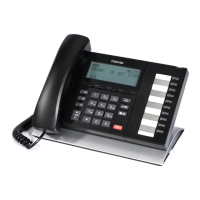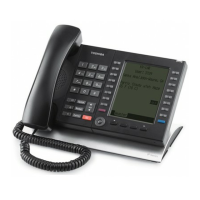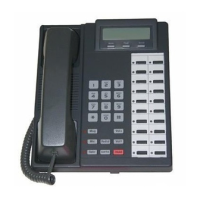SIP TRUNK GROUP PROGRAMMING Programming the Incoming Line Group
11-4 Installation Manual June, 2011
SIP TRUNK GROUP
PROGRAMMING
The following pages show the general programming and configuration
steps to implement a SIP trunk. Specific procedures for each provider are
in the linked tables in this document.
Note: SIP trunking requires a license for each trunk. No channel group
can successfully be programmed without a license.
Programming the
Incoming Line Group
1. Select Trunk > Trunk Groups. Click on the New icon.
2. Select the server to which to add the trunk group.
3. In the Group Direction pull-down select Incoming and Outgoing.
then, click on OK.
4. In the Common tab select a trunk Group Number then select Group
Type SIP. Record this number.
5. On the Incoming tab in the CO Service Type select DID then, set the
number of DID digits (Default = 4 digits).
The DID Digits parameter sets how many of the digits received from
the SIP Trunk will be used to choose the station to which the call
goes. For example; if the SIP provider sends 10 digits, and the DID
digits is set to four, only the last four digits are used to route the call.
The additional digits will be ignored. All of the received digits must be
in the URI table.
Note: Toshiba recommends that you enable Intercept and program
destination in Trunk > DID Intercept.
Programming the
Outgoing Line Group
In the Outgoing tab set the parameters for outgoing calls on this trunk
group. Typically the default values are used.
Note: An OLG flexible access code must be created for this group.
ASSIGN DID TRUNK
DESTINATION
DID routing must be set up to route incoming SIP calls to their desired
destination. This programming is the same as any other trunk group type.
If the routing is not set up, incoming Invites will fail instantly.
1. Select Trunk > DID.
2. Select the server.
3. Click on the New icon.
4. Select the ILG Group Number.
5. Select the MOH source.
6. Select the Tenant number (Default=1).
7. In the DID Audio section: Set Audio Day1 Dst Type, Audio Day2 Dst
Type and Audio Night Dst Type to Dialing Digits.
8. Set the Dst Digits to the Extension Number to which the DID calls will
ring.
9. Leave the DID Data section at default.

